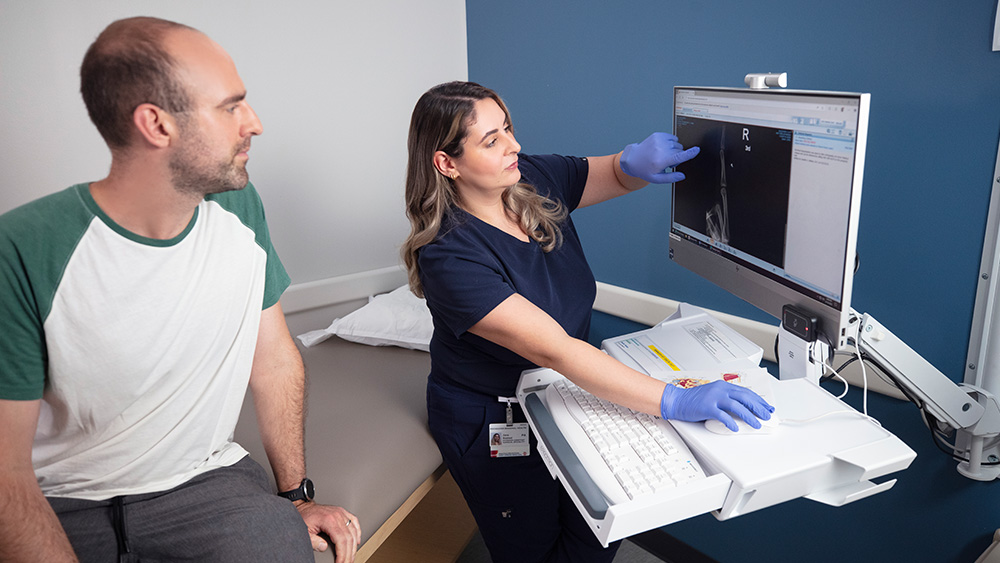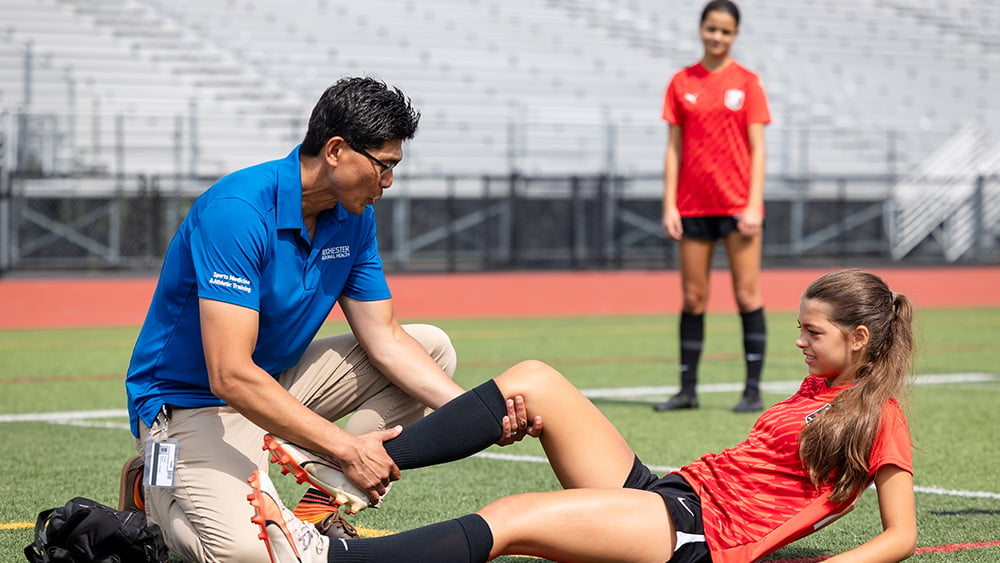Our Approach to Shoulder Care
No matter how your shoulder pain started, our orthopedic shoulder specialists work with you to find its source, treat it, and enhance your range of motion. We start with a full evaluation of your injury or condition and your medical history, then work to diagnose and treat you with a customized plan.
With our multidisciplinary approach to care, you may work with other specialists, including orthopedic surgeons, interventional orthopedic specialists, physical therapists, and other specialty providers. Together, we will get you back to your best self.
Shoulder Conditions We Treat
Our orthopedic specialists diagnose and treat a wide range of shoulder conditions, including but not limited to:
- Arthritis
- Broken and fractured bones
- Bursitis
- Cartilage damage
- Dislocation/subluxation
- Frozen shoulder
- Labrum tear
- Ligament and tendon injuries
- Osteoarthritis
- Rotator cuff tear
- Shoulder instability
- Snapping scapula syndrome
- Sprains and strains
- Tendon repairs
- Tendonitis
Our Services and Treatments
By focusing on avoiding surgical procedures unless necessary, our orthopedic shoulder specialists use non-operative therapies to promote healing, improve movement, and boost function for your shoulder. Available options include:
- Bracing and casting
- Interventional orthopedics
- Lifestyle modifications
- Medication management
- Pain management
- Physical therapy
Our orthopedic surgeons specialize in shoulder-related procedures, choosing minimally invasive techniques when possible to ensure improved mobility and function.
- Arthroscopy
- Minimally invasive surgery
- Rotator cuff repair
- Shoulder instability surgery
- Shoulder replacement
- Shoulder resurfacing
- Tendon and ligament repair








